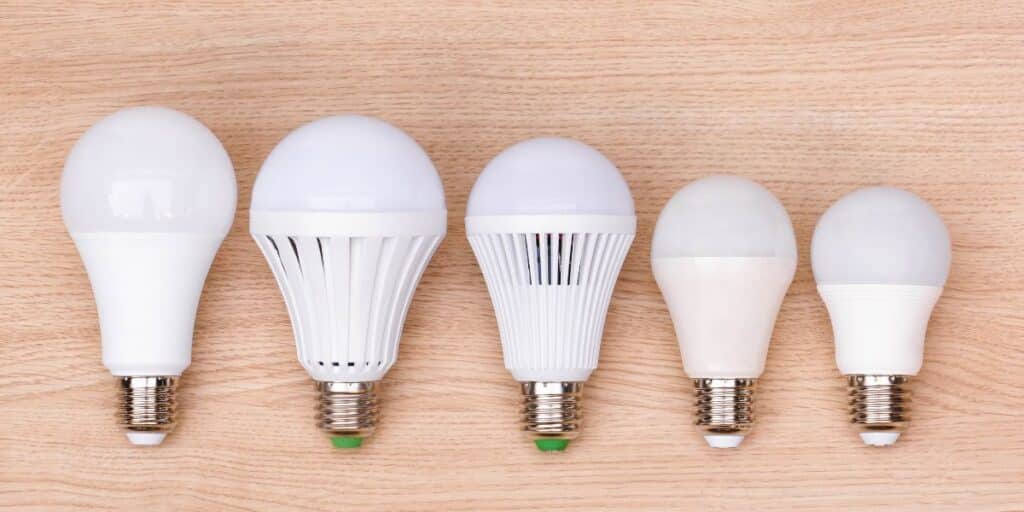Getting to Grips With Light Bulb Sizes
With so many different light bulb sizes, it’s hard to know which one you need. What’s the difference between an SES-E14 and an ES-E27? And how does a bayonet fit in with it all?
To ensure you find the perfect fit for your bedroom lights, we’ve put together a guide on the various light bulb sizes out there. Let’s dive straight into light bulb sizes explained.
Bayonet Vs Screw Cap
The first thing to get right when choosing a light bulb is the cap. This is the part that connects the glass bulb to the light fitting, and there are two leading types of bulb caps on the market: the bayonet and the screw cap.
Neither type will fit the other, so it’s vital you choose the right one. Let’s explore the light bulb sizes for these cap types.
Edison Screw Cap
The Edison Screw is named after the inventor of the light bulb himself, Thomas Edison. The bulb cap has a threaded base which you screw into the light fitting. It’s one of the most common cap styles and remains mostly unchanged since it was patented in 1881.
The Edison Screw cap (ES) is commonly found as an E27, meaning the cap has a diameter of 27mm. More recently, the Small Edison Screw cap (SES) has seen an increase in popularity, especially for smaller decorative lamps. The SES-E14 has a diameter of 14mm, while the Miniature Edison Screw (MES) E10 is just 10mm.
With all of these codes and acronyms, it’s easy to see why there’s such a need for a guide on light bulb sizes explained!

Bayonet Caps
The bayonet cap, also known as the “twist and lock” or the “push and twist” has 2 pins that you twist and lock into place. If your bulb isn’t a screw cap, it’s highly likely to be a bayonet.
The standard bayonet cap has a diameter of 22mm, which explains why it has the code BC or B22d. Just as with the Edison cap, a smaller version has seen increasing popularity. It has a 15mm diameter, so the code is SBC (small bayonet cap) or B15d.
There are a few other varieties of bayonet caps available, such as the BY22d and the 3-pin BC B22d-3, but these aren’t commonly used.
GU10 Lamps
We can’t miss out on a brief summary of GU10 light bulb sizes. With their 2 pins and twisting mechanism, they technically come under the bayonet cap family. The logic behind the code is the G indicates the bi-pin base, while the 10 relates to the 10mm distance between the pins.
These light bulbs were initially halogen, but many manufacturers now use far more energy-efficient LED lamps. If your kitchen or bathroom has spotlights, they likely need a GU10 light bulb.
Light Bulb Sizes Explained
This guide aims to explain the most common light bulb sizes to help you find the perfect fit for your new light. While the various codes may seem confusing at first, it really is a relatively simple system.
At IOS Lighting, we’re on hand to help with any of your lighting questions and needs. Contact us today for any advice on the best bulb for your unique lighting.
